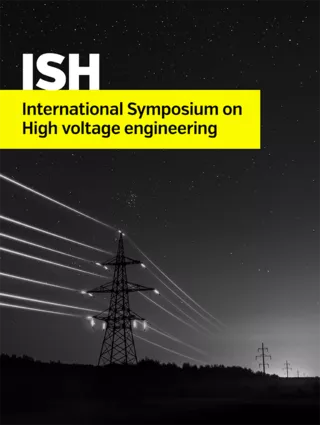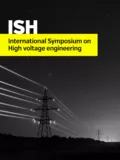Summary
In order to estimate the dielectric stress of an oil-paper insulation system it is state of the art to describe the dielectric behaviour of an insulation material by its permittivity and its conductivity. Thus, the distribution of the electrical field strength at DC voltage stress is determined according to the conductivity of the insulation materials. However, a higher field strength in front of bare metal electrodes at high DC voltage stress was determined in previous investigations. Furthermore, a dependency of the breakdown voltage on the oil level in the test vessel was shown, which is not explainable with the currently used model. Therefore, a charge carrier-based model was presented to describe the dielectric behav-iour of the oil-paper insulation. Using the Poisson-Nernst-Planck equation (PNP), it de-scribes the movement of charge carriers due to the electric field and diffusion processes and the effect of the charge carriers on the electric field strength of the arrangement. This motion can lead to an accumulation of charge carriers in front of bare electrodes and paper barriers and thus result in a higher field strength in these areas. Compared to the currently used conductivity-based model fundamental differences in the electrical field distribution can be shown. Breakdown experiments are performed to confirm the expectations accord-ing to the charge carrier-based model, using oil-paper-insulated arrangements with plane-parallel electrodes. In addition, the arrangement is sealed by a circular barrier made of transformerboard to avoid the influence of the surrounding oil of the arrangement on the experiments. The results show, that the modelling of the dielectric behaviour of these ar-rangements according to the ratio of the conductivities of the insulation material is insuffi-cient at DC voltage stress. They cannot be explained only by considering the conductivity of the insulation materials. It can be shown that the charge carriers have to be taken into account for modelling the distribution of the electrical field strength. Thus, the results of the experiments can be explained using the charge carrier-based model and can confirm the charge carrier-based field distribution according to the PNP-model qualitatively.
Additional informations
| Publication type | ISH Collection |
|---|---|
| Reference | ISH2017_340 |
| Publication year | |
| Publisher | ISH |
| File size | 344 KB |
| Pages number | 6 |
| Price for non member | Free |
| Price for member | Free |




